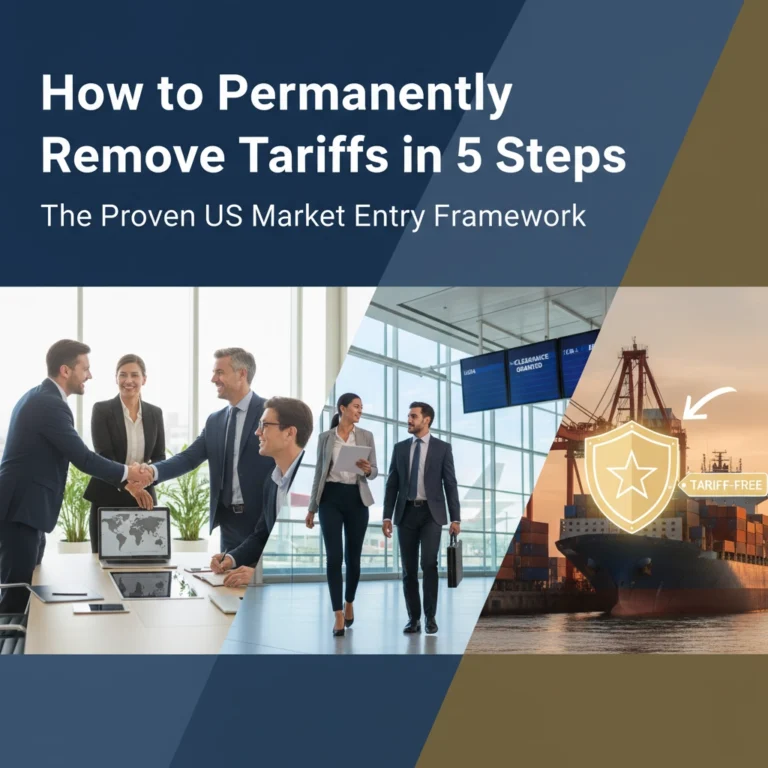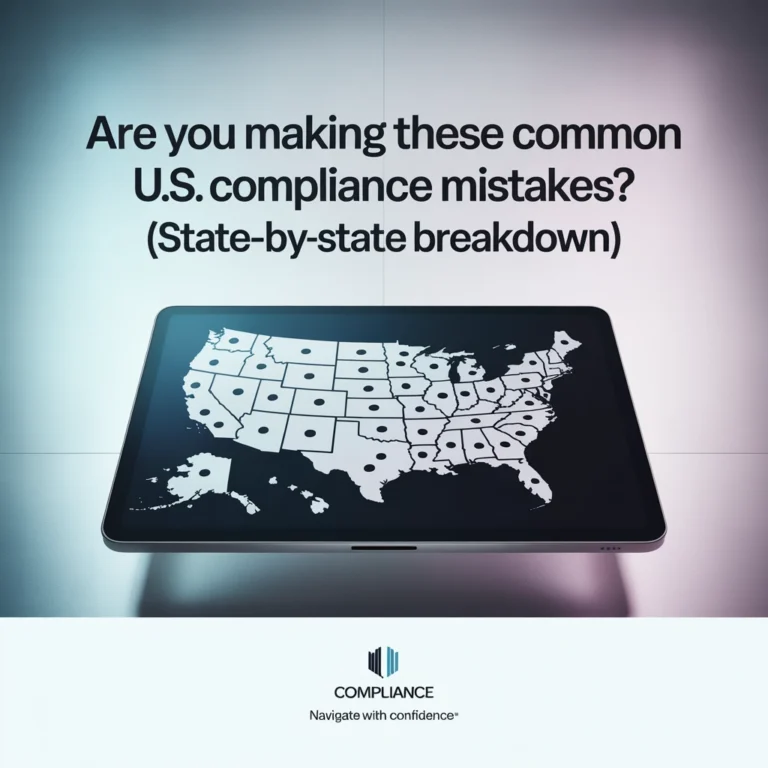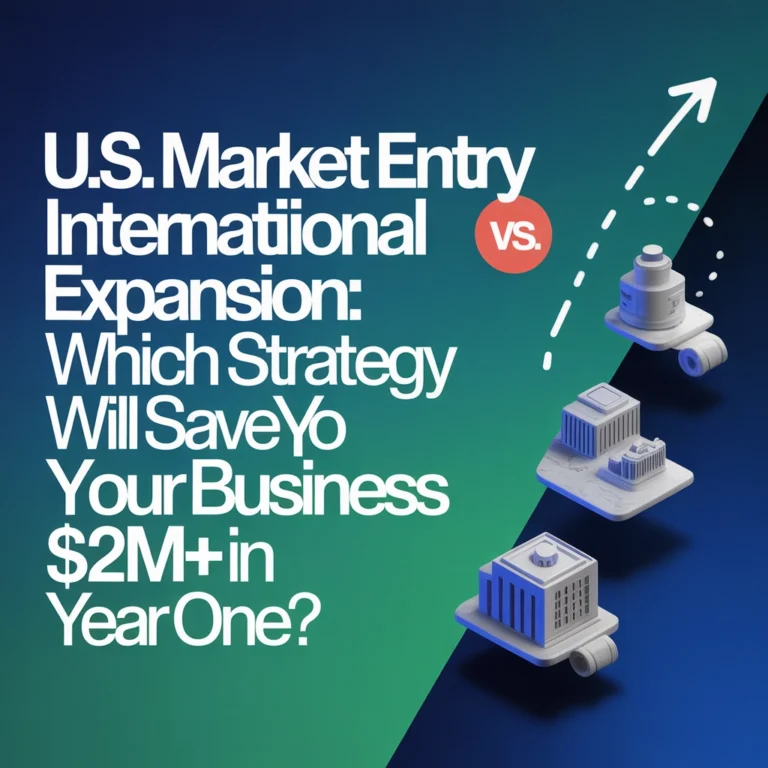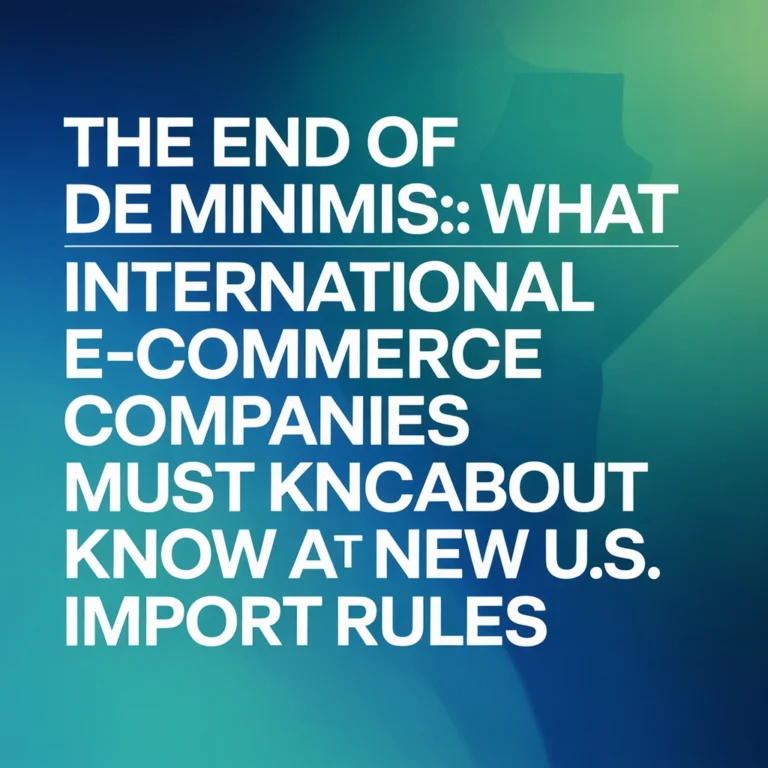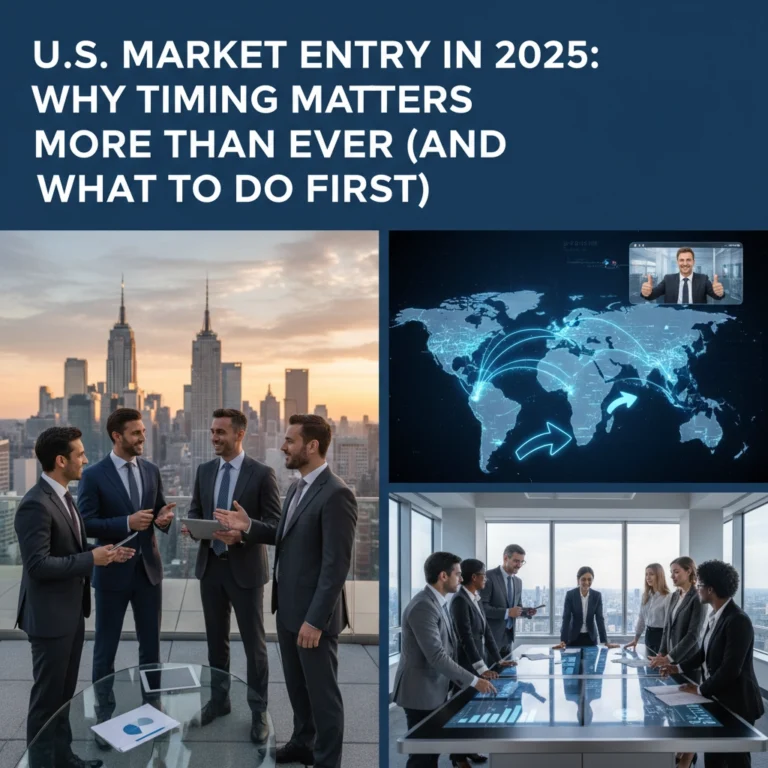Mastering U.S. Market Entry: Proven Strategies from $900M in Success Stories

Breaking into the U.S. market is the dream for countless international businesses—and for good reason. Companies that have mastered U.S. expansion boast jaw-dropping successes, with some racking up over $900 million in value through disciplined, repeatable strategies. What distinguishes these winners from the rest? Let’s break down the proven steps, lessons learned, and best practices that have powered these major market breakthroughs.
The Foundation: Four Critical Success Factors
1. Early Compliance and Smart Structuring
If there’s one core lesson from $900M success stories, it’s this: treat compliance as your launchpad, not an afterthought. The sharpest entrants make legal, tax, and operational setup part of their larger market-entry playbook. This means:
- Choosing the right business structure (LLC, C-Corp, etc.) for optimal tax positioning and liability protection,
- Protecting IP from day one, and
- Building processes for import/export and employment compliance before the first deal is signed.
Companies that skip these steps often find themselves derailed by tax audits, licensing headaches, or shipment delays. Those that invest upfront navigate speed bumps with confidence—and keep their expansion right on track.

2. Regional Prioritization Beats National Overreach
Trying to “conquer America” overnight is a recipe for burnout (and budget blowouts). Companies that win big start with a laser focus, picking regions or cities based on where their industry thrives, their target customer base is concentrated, or their supply needs are best met. Tech innovators often zero in on the Bay Area, Austin, or Boston. Manufacturers may prioritize the Midwest or the South for favorable logistics and talent.
By concentrating resources, these companies build brand presence, adapt their approach locally, and generate real momentum before expanding nationwide. Regional wins stack up fast, building confidence with both investors and leadership.
3. Phased Scaling: Prove It First, Then Scale
Splashy launches look good in headlines, but the real sustainable growth comes from phased entry. Smart companies run pilots, open a single warehouse or office, or partner with regional distributors to test the waters. They collect key data—customer feedback, sales velocity, regulatory challenges—then use those learnings to inform the next phase of rollout.
This method lets leaders spot real demand versus optimistic forecasts, control costs, and gather proof points that help win investor trust. Phased scaling also gives teams the breathing room they need to adapt their playbooks as they go.
4. Trusted Local Execution
American business culture rewards agility, trust, and relationships. Top-performing entrants invest in seasoned local advisors and on-the-ground talent who deeply understand regulations, cultural norms, and decision-making processes. They also build bridges with municipal authorities and state agencies to smooth the path for expansion permits, incentives, and hiring.
Having insiders on your team helps spot both opportunities and pitfalls—the kind of localized insight impossible to gain from abroad.
Strategic Market Entry Approaches
The “how” of market entry is as important as the “where.” Success stories highlight several strategies that work for different models and risk appetites.
Direct Export: Fast, Lean, and Flexible
Direct export is a low-risk way to test U.S. demand without heavy upfront investment. Companies retain control over their products and pricing, tap into existing channels, and gain valuable market feedback. This approach is perfect for businesses with established production and proven home-market demand who want to move swiftly, but cautiously.
Strategic Partnerships and Joint Ventures
Some industries—think healthcare, finance, or heavily regulated manufacturing—require deeper roots. Joint ventures and alliances with U.S.-based companies provide built-in local expertise, open doors to existing distribution networks, and add instant credibility.
Done right, these partnerships act as a force multiplier, easing regulatory hurdles and giving newcomers a shortcut to competitive know-how.
Acquisition as an Entry Accelerator
For firms with capital to spare and aggressive growth goals, acquiring an established U.S. business can catapult expansion. Acquisitions bring teams, customers, products, and supplier relationships in one stroke. The key: thorough due diligence, cultural integration planning, and post-deal execution.

Investor Expectations and the ROI Mindset
American investors are results-focused. When international companies announce U.S. entry, the expectation is ambitious, but disciplined growth—with clear ROI markers, timely milestone delivery, and cost control. Expansion becomes a litmus test for management skill and business model scalability.
Providing regular updates, tracking KPIs, and sticking to a well-defined plan can make or break your standing with both current and future backers. Miss milestones, or lose focus on the bottom line, and you risk more than just capital—you could put your overall growth prospects in jeopardy.
Case Studies: Learning from the $900M Club
HERSAN: Regulatory Research Pays Dividends
Take HERSAN, a Mexican manufacturer of road signage. Entering the U.S., they encountered unexpected domestic manufacturing requirements that could have delayed or derailed their plans. Instead, by engaging U.S.-based advisors early, they quickly navigated new regulations, avoided costly missteps, and secured their first local contracts—highlighting the value of preparation and guidance on the ground.
Spin Master: The Power of Product-Market Fit
Spin Master, a Toronto-based toy company, went from regional upstart to $900M revenue powerhouse within two decades by obsessing over American consumer tastes and iterating products constantly. Their growth was powered by a careful blend of compliance, phased market entry, and relentless innovation—proving that listening to the customer pays off, big.
Scale-up Success: From Launch to Multinational
Several tech and CPG companies—sometimes entering the U.S. through B2B contracts, sometimes via DTC e-commerce—have expanded their U.S. operations in deliberate phases. The winners share a few habits: prioritizing early wins, focusing marketing budgets regionally, and constantly tracking performance to adjust strategies on the fly.

Market Research and Planning—The Non-Negotiable Step
Hard data trumps wishful thinking. Before leaping into the U.S., top companies rigorously research:
- Market trends and growth vectors
- Competitive landscape and saturation risks
- Customer personas—including cultural, legal, and purchasing differences
- Regulatory hurdles at federal, state, and sector-specific levels
- Supply chain and operational footprint options
Armed with insights, they tailor their entry approach to fit both goals and constraints, set realistic KPIs, and develop contingencies for likely speed bumps.
Navigating the U.S. with USLaunch
At USLaunch, we’ve seen firsthand how discipline, local expertise, and a clear-eyed approach unlock market-transforming results. Whether you’re a manufacturing giant or a fintech scale-up, winning in America is possible with the right blueprint—and partners who know the landscape.
Curious about next steps? Learn more about how we help ambitious businesses build their own success stories at USLaunch.
Success in the U.S. isn’t about the fastest start; it’s about the smartest strategy, the best team, and the discipline to adapt and grow as you go. With proven tactics and a willingness to invest in local know-how, your business could be the next $900M story.


